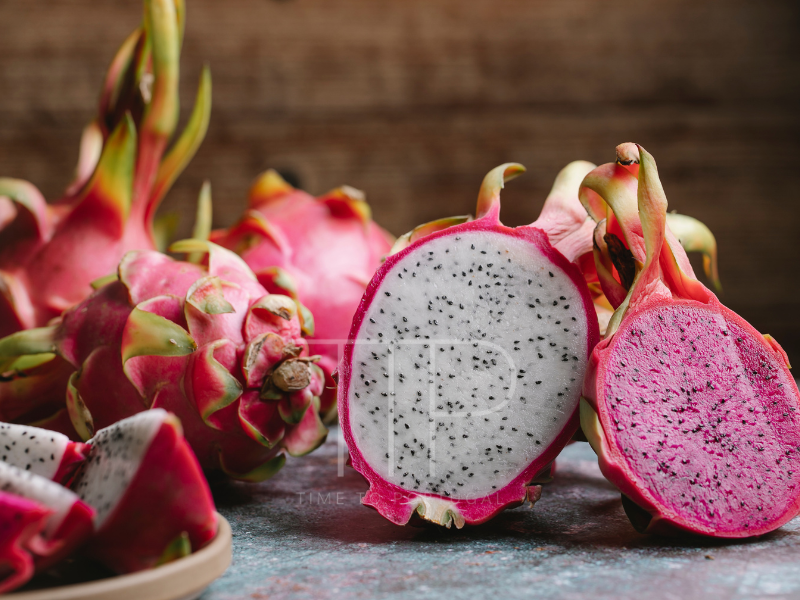Pitaya takes root in the Algarve. And consumption of this fruit is increasing because it’s good for your health.
The pitaya is a fruit with interesting nutritional characteristics that helps you lose weight. The University of the Algarve has led a study to help farmers invest in this crop, increasing family income.
Fruit growing is an area of great importance in Portugal, with demarcated regions of high interest for production. In 2023, according to the National Statistics Institute (INE), the total area of permanent crops at national level increased by 2.24% compared to 2021, reaching 761 932 hectares.
One of the regions where fruit growing is most prominent is the Algarve, which is beginning to be attractive due to the favorable climate for growing certain exotic fruit species, which are less water-intensive, such as the pitaya.
The pitaya is native to Central America and Mexico and several countries are investing heavily in its cultivation, including Brazil, Israel and China. Portugal is now taking its first steps in growing this fruit, which resembles a colorful pine cone, brightly painted on the outside and with a spiny texture. The inside is white or red and filled with small black seeds. The taste is comparable to watermelon, being sweet and giving the consumer a sensation of freshness.
Amílcar Duarte is a lecturer and researcher at the Mediterranean Institute for Agriculture, Environment and Development (MED) at the University of the Algarve. He has a degree in Agronomy, a master’s degree in Citriculture and a doctorate in Agricultural Sciences, specializing in Fruit Growing. In 2022, he coordinated the project “Dragon fruit: validating the productive capacity of the red pitaya”.
This research, funded by the Common Agricultural Policy (CAP) through the Rural Development Program (PDR2020 in Portugal), within the scope of the Operational Groups, aimed to produce knowledge with a view to developing pitaya cultivation in Portugal. The aim was – and still is – to attract producers and increase the income of the poorest families living in rural areas.
And everything seems to be in favor of this in our country, precisely in the Algarve region, since the irrigation needs of this crop are relatively low, given that it is a cactaceous plant.
Amílcar Duarte, who coordinated this study with the support of PDR 2020 and installed an experimental field with 800 plants that are already bearing fruit, located in Cacela Velha, in the municipality of Vila Real de Santo António, has no doubts: “Growing pitaya is very suitable for the Algarve, given the region’s drought cycles.”
This experimental field in Cacela Velha houses a collection of 15 varieties outdoors and in a greenhouse at the Mil Plantas nursery in Estoi, with the aim of characterizing growth, flowering and fruiting. At the same time, adding to existing information about the crop, optimizing its development in the Algarve region.
Although the pitaya is resistant to long periods of drought and doesn’t need much watering, there are still some conditions that don’t favor its cultivation in the Algarve region, which were identified in the study carried out by the University of the Algarve. The scarcity of natural pollinating agents (bats, among other nocturnal pollinators) is one example, as well as temperatures that are too low in some locations or the intensity of solar radiation during certain periods of the year.
In any case, the economic potential of this crop seems unquestionable. The pitaya is a hardy plant that adapts to dry conditions, which means low irrigation costs, and farmers are paying attention to this opportunity. On the other hand, it adapts to growing outdoors and in greenhouses, in soil and substrate, the investment is low and the fruit is paid for at a high price by consumers.
Eating pitaya helps you lose weight
And demand for pitaya is increasing among the population due to its health benefits. “It’s a fruit with interesting nutritional characteristics that helps you lose weight, since it’s low in calories, rich in fiber, vitamins and minerals,” says the University of the Algarve researcher.
Within the diversity of this fruit, which has different colors of flesh and skin, the study focuses on the white-fleshed red pitaya and the red and pink-fleshed pitaya. The aim is to determine which one or ones are best adapted to our country, as well as the most suitable cultivation technologies in these conditions.

